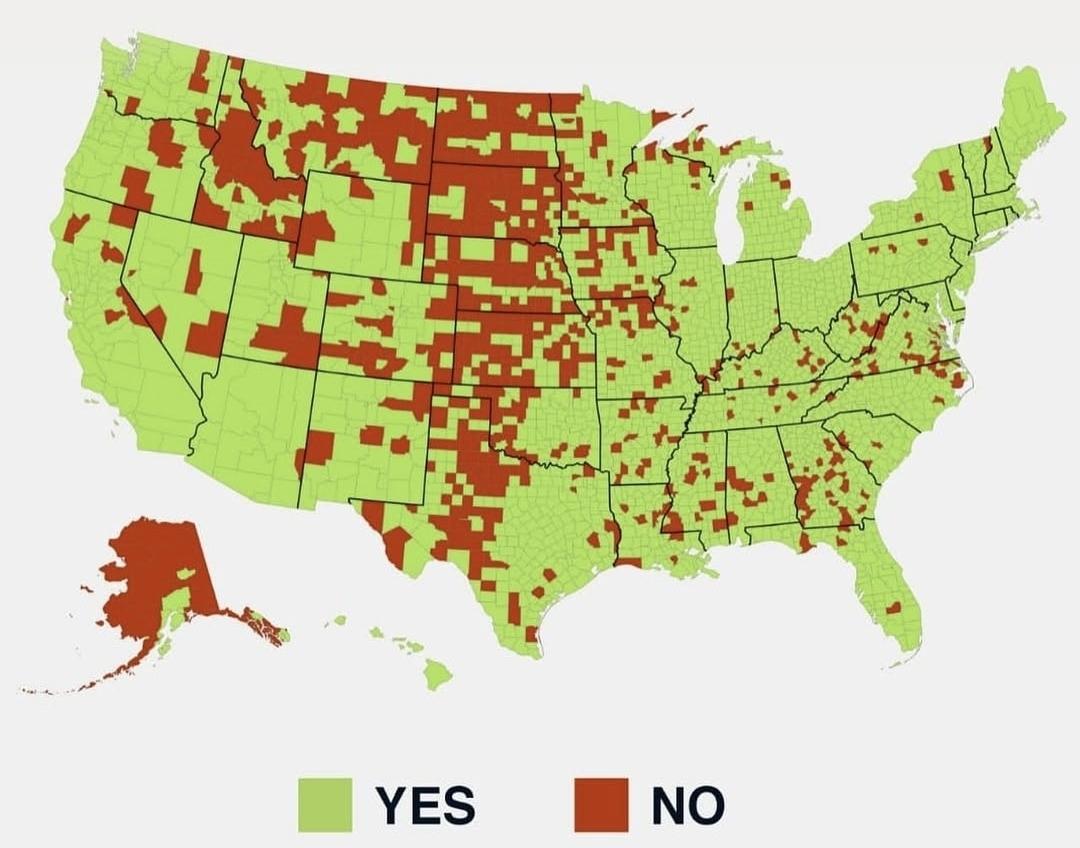Counties with and without McDonald's Map


Marcus Rodriguez
Historical Geography Expert
Marcus Rodriguez specializes in historical cartography and geographic data analysis. With a background in both history and geography, he brings unique...
Geographic Analysis
What This Map Shows
This map visualizes the distribution of McDonald's locations across various counties in the United States. It highlights counties that host McDonald's restaurants alongside those that do not, providing a clear picture of the fast-food giant's reach and presence. By examining this map, we can glean insights not only into the popularity of this well-known chain but also into broader socio-economic patterns that influence where such establishments are located.
Deep Dive into Fast Food Culture and Its Geographic Distribution
Fast food is an integral part of modern American life, with chains like McDonald's leading the market. Interestingly, the presence of McDonald's in a county can often indicate various socio-economic factors, including population density, average income levels, and urbanization. McDonald's, with its unique ability to adapt its menu and services to local tastes, has historically been found in areas with higher population densities. For instance, urban centers are typically more saturated with fast-food options, including numerous McDonald's locations.
Moreover, McDonald's is known for its extensive market research and site selection processes. They often choose locations based on traffic patterns, visibility, accessibility, and local demographic trends. This strategic placement is critical for maximizing customer reach. Have you ever wondered why some rural counties have no McDonald's at all? Factors such as lower population density, limited economic resources, and even cultural preferences for local dining options can result in a complete absence of this global brand.
According to the company's statistics, as of 2020, McDonald's operated over 13,000 locations in the United States alone, making it one of the most pervasive fast-food chains in the country. However, it's important to note that while some counties boast several McDonald's locations, others remain entirely devoid of the iconic golden arches. This stark contrast can be attributed to varying economic conditions, cultural preferences, and the competitive landscape of local dining. For example, counties that have a strong preference for local restaurants or where fast-food consumption is lower may not see a McDonald's, even if they are within driving distance of urban areas.
The fast-food industry, particularly in recent years, has also faced shifts in consumer behavior. Health-conscious trends and the rise of plant-based diets are influencing where and how often people dine out. As a result, some regions may experience a decline in traditional fast-food consumption, prompting companies like McDonald's to adapt their menus and marketing strategies. The map of counties with and without McDonald's serves as a fascinating lens through which to explore these evolving trends and preferences.
Regional Analysis
When inspecting the map, notable trends emerge across different regions of the United States. For instance, major metropolitan areas like New York City, Los Angeles, and Chicago show a high density of McDonald's locations. The accessibility of these restaurants aligns with urban living patterns where convenience is paramount. In contrast, rural areas, particularly in the Midwest and parts of the South, often show a lack of McDonald's. For example, counties in Wyoming or Montana may have few or no McDonald's, which can be attributed to lower population density and a preference for local eateries.
Interestingly, states like California and Texas exhibit a mix—urban centers have numerous McDonald's, while rural counties can be entirely devoid of them. This duality highlights significant socio-economic divides within regions, where urbanization leads to a proliferation of fast-food culture while rural areas maintain a different culinary landscape. In addition, some regions with strong agricultural backgrounds might emphasize local food sources, further reducing the likelihood of a McDonald's presence.
Significance and Impact
Understanding the presence of McDonald's and similar fast-food chains in various counties is more than just a matter of culinary preference; it reflects economic conditions, cultural attitudes, and changing consumer behaviors. The significance of this topic lies in its implications for public health, local economies, and urban planning. For instance, counties with higher access to fast food often face challenges related to diet-related health issues such as obesity and diabetes.
Moreover, as the landscape of fast food continues to evolve, particularly amidst a growing focus on sustainability and health consciousness, the future of McDonald's and its competitors may shift significantly. The company's ability to adapt to these trends will be critical in determining its success in both urban and rural markets. Moreover, local governments and health organizations can use this data to promote healthier eating habits and support local businesses, ultimately impacting community health and economic vitality.
In conclusion, the map depicting counties with and without McDonald's serves as a compelling visual representation of food culture in America. It invites us to ponder questions about consumer behavior, economic conditions, and even regional identities, reminding us that food, in its many forms, is deeply intertwined with the fabric of our communities.
Visualization Details
- Published
- October 19, 2025
- Views
- 36
Comments
Loading comments...